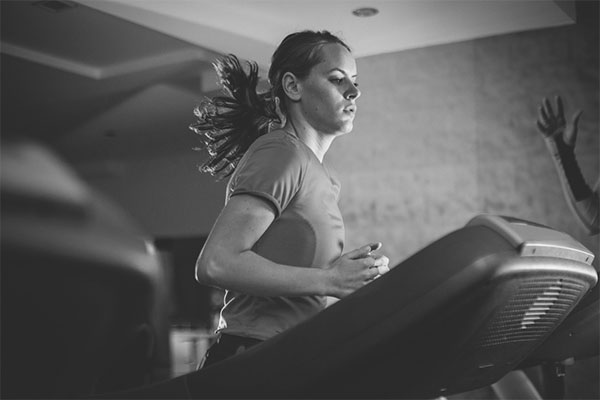A Midday Cardio Session May Make You A Better Worker

Catherine O’Brien
The lunchtime workout is becoming more and more popular. Many people are foregoing the trip to the salad bar or sandwich shop and instead opting to eat on the run or at their desk so they can squeeze in a midday sweat session. Most fitness studios and gyms even offer quick midday classes to accommodate these motivated nine to fivers. Of course, there are physical health benefits associated with working out on your lunch break, but what you may not know is that clocking in midday cardio may actually make you a better worker.
The Study
Research conducted by Wollseiffen, Ghadiri, Scholz, Strüder, Herpers, and Schneider (2015) examined the link between neurophysiological changes associated with physical activity during the workday and how these neurophysiological changes promoted improved cognitive performance.
Participants were 50 healthy men and women. Each participant was asked to work at his or her respective job for two hours prior to coming into the lab. Once at the lab, participants were placed in one of five conditions.
The first was a bike ergometer condition in which participants engaged in stationary cycling for 20 minutes maintaining 70% of maximum heart rate.
The second was a boxing intervention using a hanging boxing bag. This was a high intensity intervention that consisted of a warm-up, a 3-minute maximum exhaustion combination, running in place while doing light uppercuts, 1.5 minutes of small steps and jumps around the boxing bag, 30 seconds of very vigorous and high frequency uppercuts in a standing positon and finally a cool down.
The third condition was intended to mimic a usual work break. In this condition, the 20 participants were told they could do whatever they wanted / normally did on his or her break with the exception of eating lunch.
The fourth condition was the resting condition in which participants enjoyed 20-minutes in a massage chair. The final condition was a no break condition.
The Mood Meter
All participants were given a battery of cognitive tests that measured attention, mental arithmetic, and spatial recall. Affective state was measured on the Mood Meter® which consisted of 32 adjectives displayed on a screen in a random sequence. Participants were asked to indicate how well the presented adjective represented his or her current physical or mental state ranging from 0 (not at all) to 5 (completely).
The Mood Meter measured perceived physical state (PEPS), psychological strain (PSYCHO) and motivation state (MOT). Finally, all participants’ brain activity was recorded using electroencephalography (EEG). Participants were tested before and after the respective interventions (Figure 1).
They hypothesized that a moderate intensity workout in the middle of the workday would promote improved cognitive performance and decreased frontal cortex activity that is indicative of cortical relaxation (p. 513).
The Results
Results demonstrated that the boxing intervention improved cognitive performance, perceived psychological state and increased prefrontal alpha-2 activity (see figures below). Alpha-2 activity is a marker of cortical relaxation (Wollseiffen et al., p.521). Participants in the bike condition demonstrated increased activity in the prefrontal alpha-2 activity as well. Interestingly, the normal break condition was the only condition to produce an improvement in mood but did not prompt any improvements in cognitive performance or changes in cortical activity.
The results of this study are interesting for a couple of reasons. First, boxing was an interesting intervention to include given most studies stick to walking, running and cycling. Given the increasing popularity of boxing workouts and my own personal love of boxing, this research intrigued me. Boxing is one of my favorite workouts because it is high intensity strength training that is never boring or repetitive. I have taken boxing classes at numerous gyms and fitness studios around the city and the 45-60 minute programs fly by like no other type of class I’ve taken.
Takeaway
Next, I was pleased to see that research was being done on the productive outcomes associated with a midday workout. It is no secret that people today are busier than ever and not everyone has the time (or energy) to wake up early or hit the gym after work. I love the idea of a lunch time workout because it makes working out and the associated benefits accessible to a larger population.
References
Wollseiffen, P., Ghadiri, A., Scholz, A., Strüder, H.K., Herpers, R., Peters, T. and
Schneider, S. (2015). Short bouts of intensive exercise during the workday have a positive effect on neuro-cognitive performance. Stress and Health, 32, 514-523.
You Might Like:

















